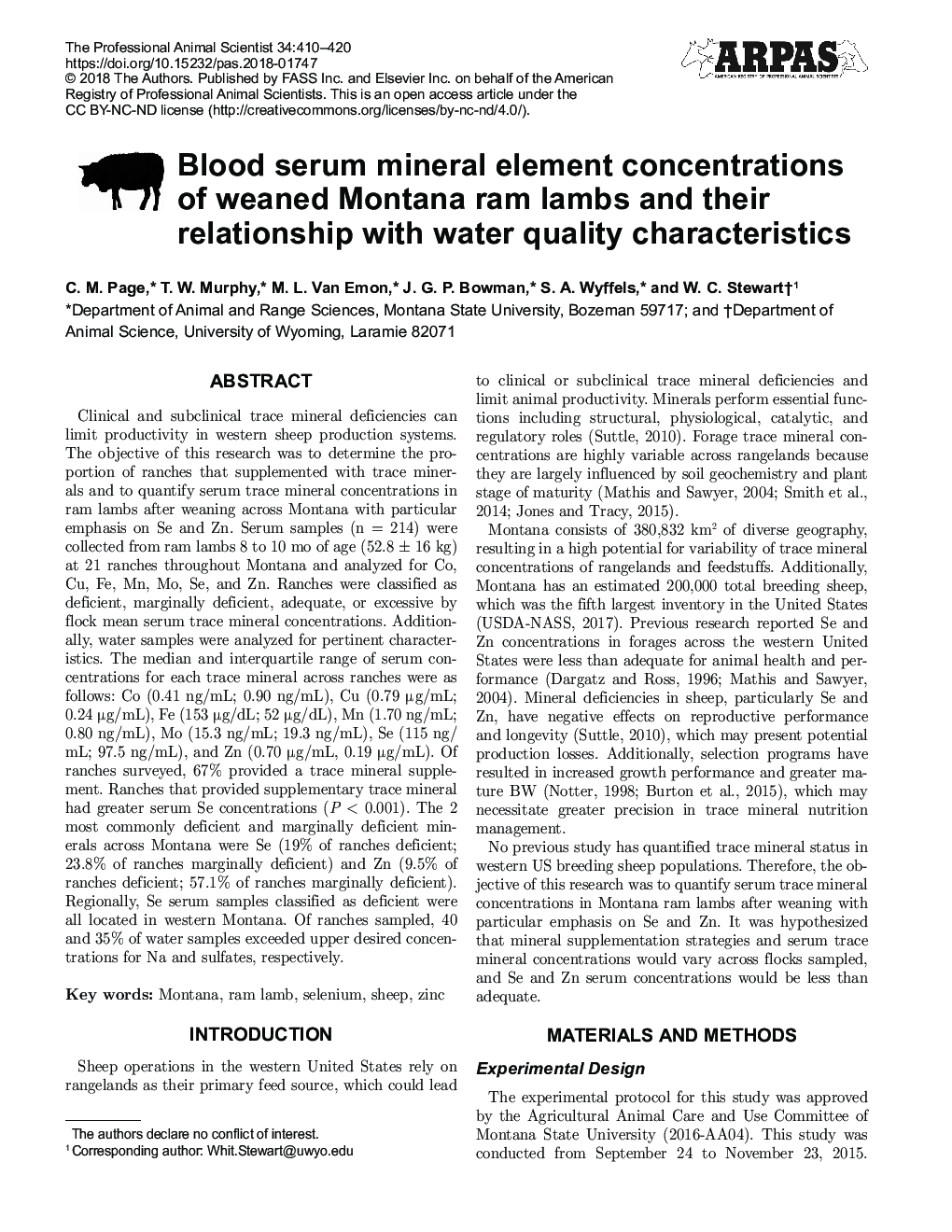| Article ID | Journal | Published Year | Pages | File Type |
|---|---|---|---|---|
| 10158128 | The Professional Animal Scientist | 2018 | 11 Pages |
Abstract
Clinical and subclinical trace mineral deficiencies can limit productivity in western sheep production systems. The objective of this research was to determine the proportion of ranches that supplemented with trace minerals and to quantify serum trace mineral concentrations in ram lambs after weaning across Montana with particular emphasis on Se and Zn. Serum samples (n = 214) were collected from ram lambs 8 to 10 mo of age (52.8 ± 16 kg) at 21 ranches throughout Montana and analyzed for Co, Cu, Fe, Mn, Mo, Se, and Zn. Ranches were classified as deficient, marginally deficient, adequate, or excessive by flock mean serum trace mineral concentrations. Additionally, water samples were analyzed for pertinent characteristics. The median and interquartile range of serum concentrations for each trace mineral across ranches were as follows: Co (0.41 ng/mL; 0.90 ng/mL), Cu (0.79 μg/mL; 0.24 μg/mL), Fe (153 μg/dL; 52 μg/dL), Mn (1.70 ng/mL; 0.80 ng/mL), Mo (15.3 ng/mL; 19.3 ng/mL), Se (115 ng/mL; 97.5 ng/mL), and Zn (0.70 μg/mL, 0.19 μg/mL). Of ranches surveyed, 67% provided a trace mineral supplement. Ranches that provided supplementary trace mineral had greater serum Se concentrations (P < 0.001). The 2 most commonly deficient and marginally deficient minerals across Montana were Se (19% of ranches deficient; 23.8% of ranches marginally deficient) and Zn (9.5% of ranches deficient; 57.1% of ranches marginally deficient). Regionally, Se serum samples classified as deficient were all located in western Montana. Of ranches sampled, 40 and 35% of water samples exceeded upper desired concentrations for Na and sulfates, respectively.
Related Topics
Life Sciences
Agricultural and Biological Sciences
Animal Science and Zoology
Authors
C.M. Page, T.W. Murphy, M.L. Van Emon, J.G.P. Bowman, S.A. Wyffels, W.C. Stewart,
